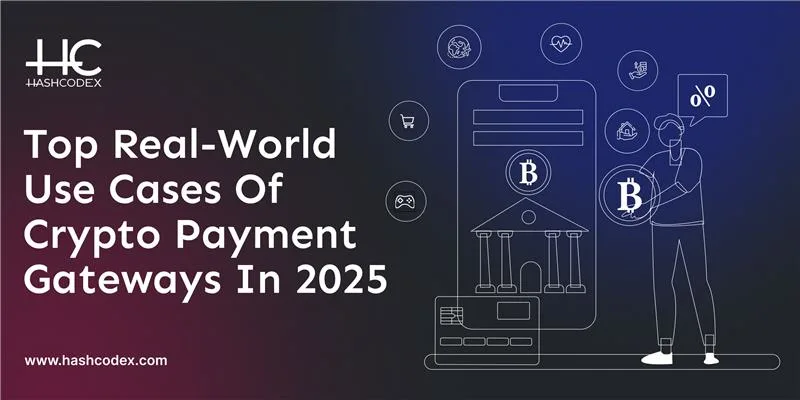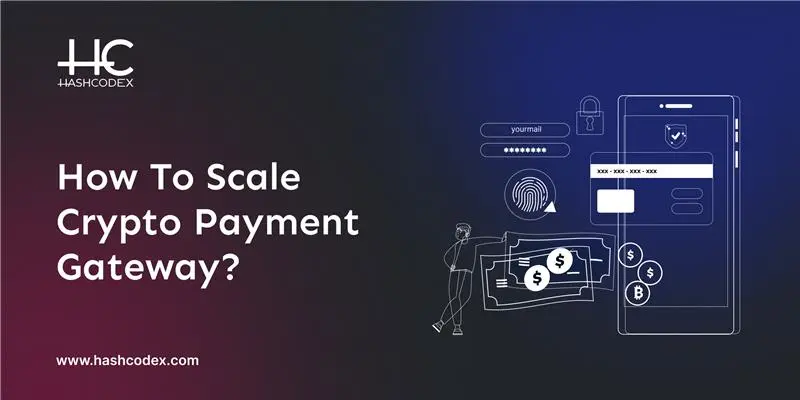
Table of Contents
Are you planning to build a crypto payment gateway but not sure how much it will cost?
The price can vary based on several factors, but understanding them can help you budget wisely. A basic gateway with standard features will be more affordable.
But if you need advanced security, multi-currency support, or custom features, the cost will be higher. Custom-built solutions offer more flexibility but are pricier than white-label options. The choice also depends on scalability and compliance needs, which can impact long-term expenses. Selecting the right provider ensures a balance between cost and functionality.
So, how do you plan your budget?
In this blog, we’ll explain the cost factors in a simple way, giving you a clear idea of what to expect.
What Is the Estimate Cost to Develop a Crypto Payment Gateway?
The approximate cost to develop a crypto payment gateway typically ranges from $20,000 to $100,000, depending on features, security, compliance, and whether it is custom-built or white-label.
A white-label crypto payment gateway is a cost-effective option, usually priced between $20,000 and $50,000. It provides a pre-built infrastructure that businesses can customize with branding and essential features, reducing development time and costs.
A custom-built gateway costs more, ranging from $50,000 to $100,000 or higher. This option offers full control over features like multi-currency support, fraud detection, high-end security, and KYC/AML compliance. It is ideal for businesses needing unique functionalities and scalability.
Development costs also cover backend infrastructure, blockchain integration, API connections, and security protocols. Additionally, businesses must consider regulatory compliance, hosting, and ongoing maintenance expenses.
Whether you're starting new or upgrading an existing system, the final cost depends on your business needs.
What Affects the Cost of Crypto Payment Gateway Development?
The cost of developing a crypto payment gateway depends on several factors that affect functionality, security, and compliance. Here are the key elements that influence development expenses:
1. Features and Functionalities
The cost depends on the features included. Basic gateways handle transactions, while advanced ones support multiple currencies, fraud detection, KYC/AML compliance, and reporting tools. More features require additional development work and resources.
2. Blockchain Integration
Using a single blockchain lowers costs, while multiple blockchain support increases expenses due to complex coding and added security measures. The selection of blockchain technology affects transaction speed, scalability, and overall development requirements.
3. Security Measures
Adding encryption, two-factor authentication, and multi-signature wallets increases security but also raises costs. Strong security features help protect transactions and prevent fraud, making them essential for building trust and long-term reliability.
4. Regulatory Compliance
Meeting KYC/AML regulations involves additional costs for identity verification, legal support, and data protection. Compliance with industry standards is necessary for legal operation and helps businesses avoid penalties or restrictions in different jurisdictions.
5. Customization vs. White-Label Solutions
Custom-built gateways cost more because they include unique features and branding. White-label solutions are more affordable, providing a pre-built system that can be modified to fit specific business needs without high development expenses.
6. API and Third-Party Integrations
Connecting to banking APIs, payment processors, and external services requires development work, increasing costs. These integrations allow businesses to offer additional services such as automatic currency conversion, payment tracking, and faster transaction processing.
7. Ongoing Maintenance and Support
Regular updates, security fixes, and customer support require continuous investment. Businesses need to allocate resources for monitoring performance, resolving technical issues, and upgrading the system to stay competitive in the payment processing market.
8. Development Partner
A skilled crypto payment gateway development company helps reduce unnecessary costs and delivers high-quality solutions. Choosing an experienced partner protects the gateway, meets security requirements, operates easily, and provides long-term value for the business.
Custom vs. White-Label Crypto Payment Gateway: Which One Is Cost-Effective?
When businesses plan to develop a crypto payment gateway, they often debate between a custom-built solution and a white-label option. Some believe a custom gateway is the best choice because it offers full control over features, security, and branding. It’s designed to meet specific needs, which is great for businesses that want a unique system. However, this level of customization comes at a higher price, typically between $50,000 to $100,000 or more, and takes months to develop.
On the other hand, many businesses prefer a white-label crypto payment gateway because it’s more affordable and faster to launch. It costs around $20,000 to $50,000, and since it’s a pre-built system, companies can quickly integrate it and start accepting crypto payments. It’s a popular choice for startups or businesses that want to enter the market without spending too much.
Some believe a custom gateway is worth the investment in the long run, while others think a white-label solution is the smarter move for getting started quickly. At the end of the day, it all comes down to what works best for your business.
How to Reduce Development Costs Without Compromising Quality?
Reducing development costs doesn’t mean sacrificing quality. By making smart choices in technology, features, and development partners, businesses can build a crypto payment gateway that is both affordable and trustworthy. Here’s how to do it:
1. Choose a White-Label Solution
Using a white-label crypto payment gateway saves time and money compared to building a custom solution. It provides essential features while allowing customization to fit business needs without high development costs.
2. Prioritize Essential Features
Focusing on must-have features like secure transactions and multi-currency support helps reduce unnecessary expenses. Advanced features can always be added later based on business growth and user demand.
3. Invest in Proper Testing
Testing throughout development helps detect and fix issues early, preventing expensive fixes later. Regular testing also improves system stability, reducing potential security risks and operational disruptions.
4. Optimize Security Measures
Adding strong but cost-effective security features like two-factor authentication and encryption helps protect transactions without overspending. Choosing trusted security tools reduces risks and keeps user data safe.
5. Work with an Experienced Development Company
Partnering with a crypto payment gateway development company that has expertise in blockchain solutions helps avoid unnecessary expenses. Experienced developers create well-built solutions that meet industry standards while staying within budget.
To Sum up
Now that you have a clear understanding of the cost of development, it’s easier to plan your approach. The decision between different solutions depends on your budget, security needs, and required features for your business growth. Knowing these factors will help you make a more informed choice.
HashCodex can help simplify the crypto payment gateway development process while keeping costs manageable. By focusing on essential features, conducting thorough testing, and implementing strong security measures, businesses can create a payment system that offers long-term value without overspending. This supports ongoing business operations.




